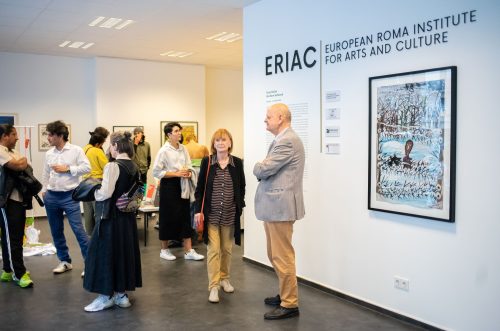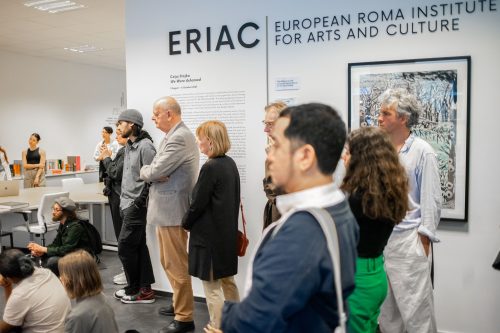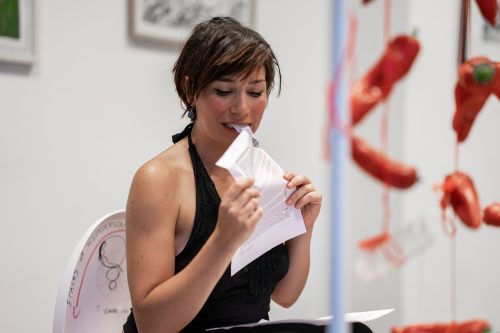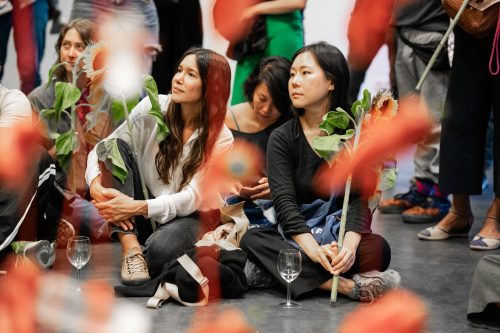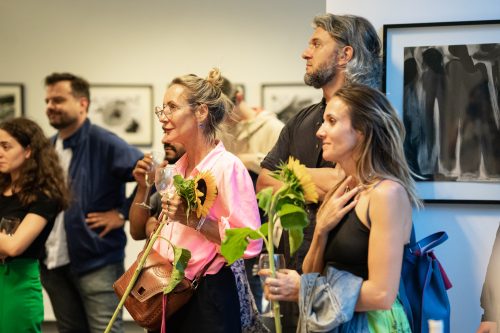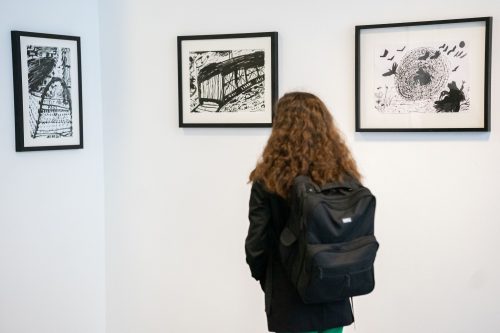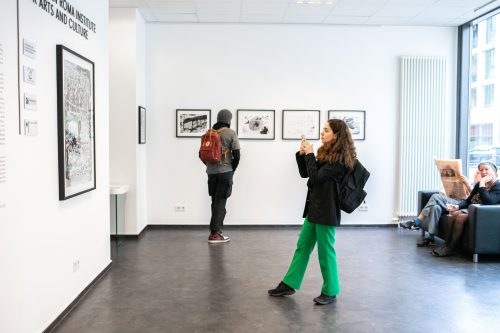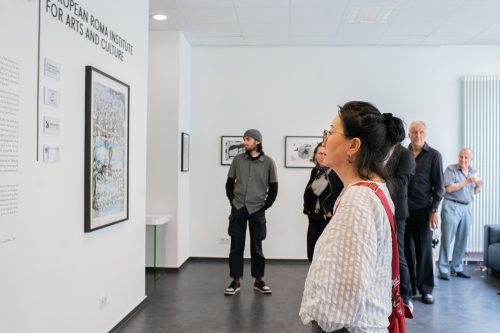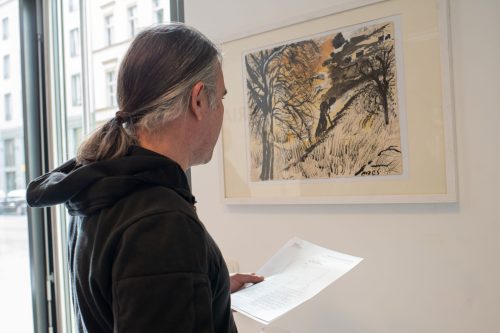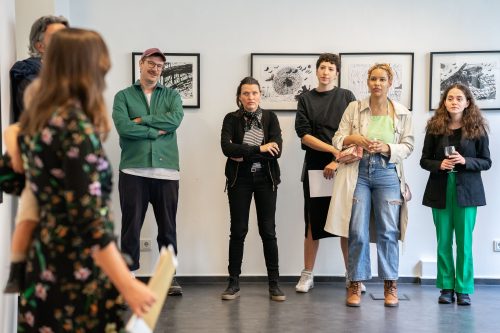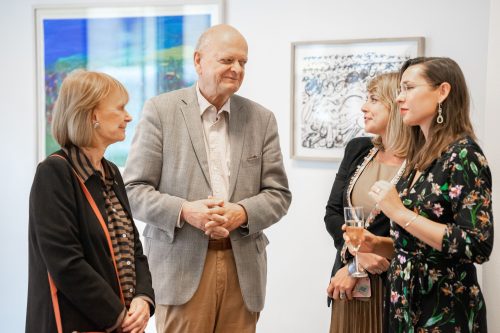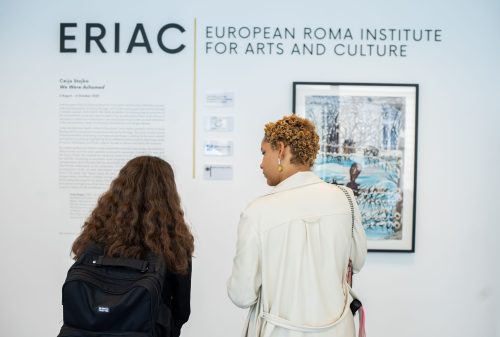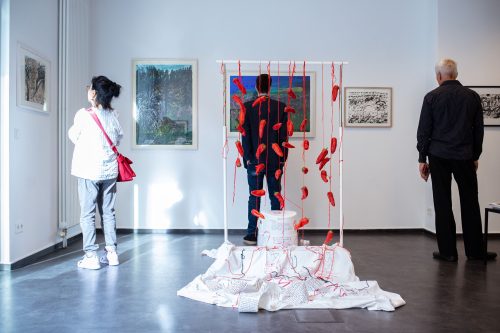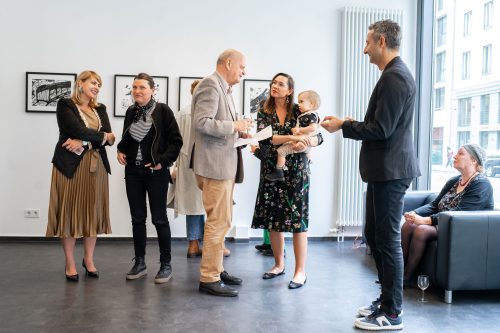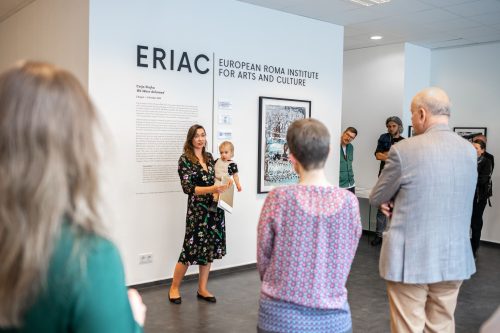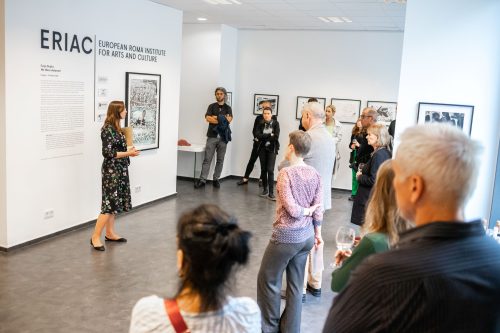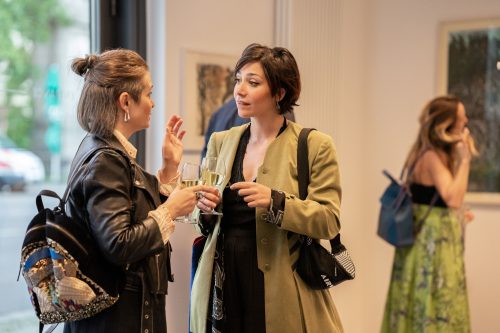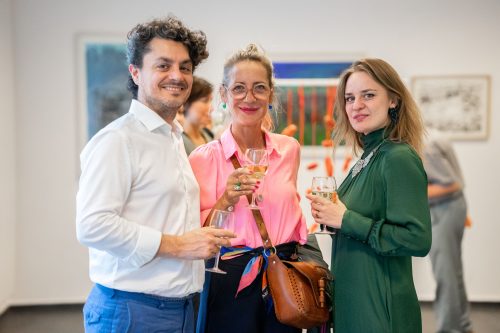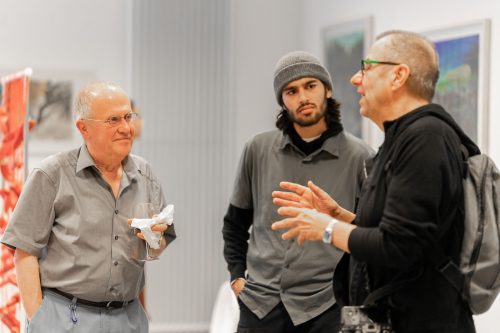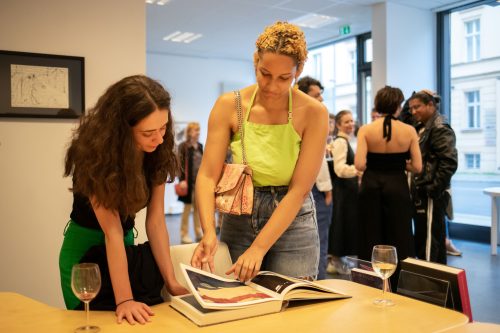Ceija Stojka: We Were Ashamed
You and your friends are warmly invited to the exhibition opening on August 2, commemorating International Roma Holocaust Remembrance Day*.
We Were Ashamed
Ceija Stojka
Opening: Wednesday, August 2, 6 – 8 pm
Spaces of Misunderstandings by Luna De Rosa; 7pm
On view from August 3 to October 6
European Roma Institute for Arts and Culture
Reinhardtstraße 41–43, 10117 Berlin
Opening hours: Monday – Friday, 9-17
A white paper is filled with lines of black ink, showing the naked bodies of female prisoners, outlining bare breasts and bony ribcages, with hands covering genitalia. Across the legs in slender capitals: AUSCHWITZ. WE WERE ASHAMED. The drawing depicts prisoners of the concentration camp who were forced to line up and stand in front of SS officers. It represents a scene from Ceija Stojka’s own lived experience as she survived internment in the concentration camps of Auschwitz, Ravensbrück, and Bergen-Belsen.
Under the title Even Death is Afraid of Auschwitz, Ceija Stojka created a series of works dealing with her persecution experiences during the NS reign. This cycle consists mainly of black and white ink drawings and fewer oil paintings, in contrast to the more colorful and expressive paintings highlighting Roma resilience and survival by depicting scenes of nature, landscapes, and Roma wagons, as well as dance and family life moments.
By combining these two distinct cycles of painterly works by Ceija Stojka, the exhibition demonstrates how her works operate as powerful messengers between the past and the future. Stojka has created an impressive body of work after starting to paint in her mid-50s, employing an evocative visual language that challenges conventions of representation and technique. She has developed a practice that accomplishes what Ethel Brooks understands as the reclamation of the camp: “The camp is our history; encampment is both our past and present condition. What will its place be in our future? The camp—the ‘Gypsy’ camp, the slave quarters, the concentration camp, the refugee camp—manifests in multiple iconographies and multiple materialities” (Brooks, 2013), setting the stage for her essay. In this sense, Stojka’s oeuvre employs the temporal and spatial contingencies of her own experience. It generously offers potentialities to imagine a future of self-confidence and pride for Sinti and Roma.
The opening follows Luna De Rosa’s performance, Spaces of Misunderstandings, inspired by Ceija Stojka’s message of resilience and resistance. Through an ironic feminist and intersectional critique, the artist reflects on the problematic issues of nomadic camps, exclusion, categorization, and police violence against Roma and other racialized people in Europe. Additionally, she explores the challenges Roma women face in countries like Italy, where discussing Roma remains a taboo. Accompanied by remixes of songs from Pauline Oliveros, Nana Vasconcelos, and the Roma anthem, De Rosa evokes the concept of an invisible archive, symbolized by small bottles suspended in a curtain of peppers, guarding against evil and distancing from accumulated trauma and frustration carried by the Roma community.
Ceija Stojka (1933 – 2013) is an Austrian writer, artist, singer, activist, and survivor of the National Socialist concentration camps of Auschwitz, Ravensbrück, and Bergen-Belsen. She was born on May 23, 1933, in Kraubath an der Mur in Styria, Austria. After the war, she pursued a career in marketing. In the late 1980s, she became involved in the Austrian Romani movement and later dedicated herself to Holocaust education initiatives. Her first autobiography, Wir leben im Verborgenen: Erinnerungen einer Rom-Zigeunerin (1988), became the first writing by a Romani person in Austria to recount the horrific torture endured during National Socialism.
Luna De Rosa is an Italian activist and multidisciplinary artist from the Roma diaspora who works and lives between Berlin and Milan. The body serves as the starting point of her artistic work. Through interventions in the public sphere, she expresses the relationship that binds the body to the social context that essentially governs and defines it. In recent years, her artistic work has focused on the vulnerability of ethnic minorities, particularly the Roma, who experience significant exclusion and racism.
International Roma Holocaust Remembrance Day: On August 2, 1944 – despite fierce resistance – 2,897 Roma men, women, and children were loaded onto trucks, taken to gas chambers, and killed in Auschwitz. Each year on August 2, we commemorate 500,000 Roma people murdered by the National Socialist regime during the Second World War.
Cover image: Ceija Stojka, Auschwitz. We were Ashamed., 2008, 30×42 cm, Indian ink on paper
Photos of the opening ceremony: @Esra Gultekin
The exhibition is a collaboration between Stiftung Kai Dikhas (DE) and ERIAC (DE). Ceija Stojka’s artworks form part of the permanent collection of Stiftung Kai Dikhas.
Reinhardtstraße 41–43, 10117 Berlin
www.eriac.org
+49 (0)30 40 633 733


